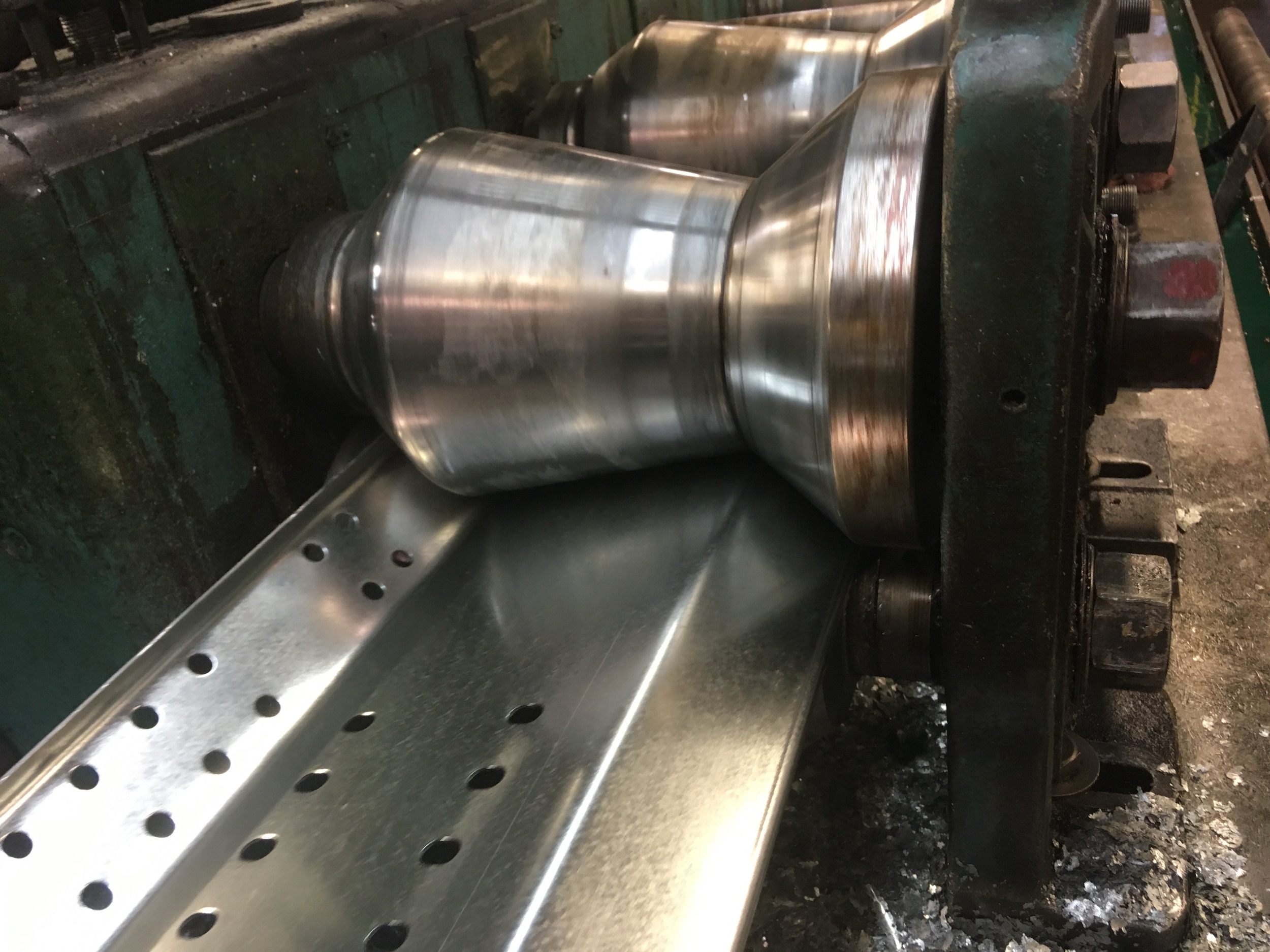While different projects call for different materials, it’s always a good idea to look into the options and choose the type of custom metal forming that gives you the highest quality result for the best price. Different processes produce steel that is best suited for different applications and choosing the right option can make a difference with performance. Roller Die + Forming handles cold roll forming of steel, including many different grades and types of steel, aluminum, and other metals, as well as providing several other in-line processes. We’d love to help you determine if cold roll forming is right for your project.
Hot Roll Forming
Hot-rolled steel means that the steel is rolled after being heated to above it’s recrystallization temperature, generally in excess of one thousand degrees Fahrenheit. The heated steel is malleable at
this temperature, can be formed into the necessary shape, and then cooled to room temperature. This avoids certain types of stresses on the steel while it’s being shaped and hardened. However, as the steel cools, it shrinks. Because this shrinking cannot be precisely controlled, there are often variations in the overall size, shape, and finish of hot roll formed steel. Further, hot rolled steel has a scaly surface finish that requires an additional process to remove.
Cold Roll Forming
If precision, a smooth finish, and strength are important to your product, then cold rolled steel is the way to go. Cold roll formed steel is run through a series of rollers at room temperature and so requires no cooling. This allows the steel to be rolled to precise dimensions, creates a clean finish, and allows for precision in other in-line processes such as hole punching and cut-off. Further, cold rolled steel is stronger than hot rolled products and does not have the added costs of time and materials to heat and cool the product.
At Roller Die + Forming, our in-line processes allow us to produce cold rolled steel in almost any length. The limiting factor is not our machines but transporting the product to your facility. Further, our experienced roll forming engineers can help you take advantage of our Standard Tooling Library to cut the up-front cost of tooling and design a process that helps you create exactly the part or parts you need. To learn more, browse our catalog or reach out today.

 español
español English
English English
English español
español